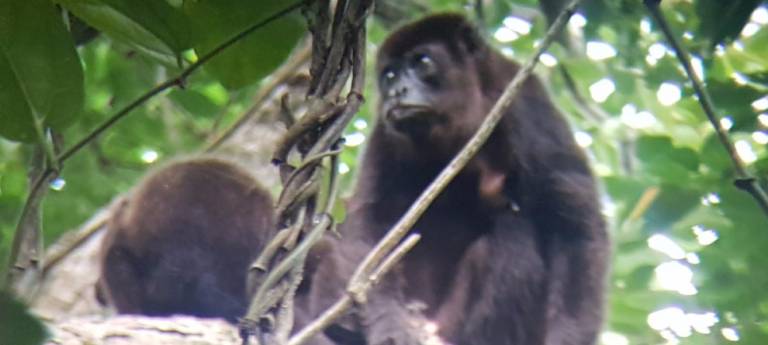Howler Monkey Research in Mexico
18 March 2019
With funding support from the Santander Universities Mobility Bursary, Debbie from Biological Sciences joined a Howler Monkey research programme in Veracruzana, Mexico.

Debbie Walsh, Biological Sciences
During the summer of 2018 I decided that I wanted to experience how fieldwork would be in different continent than Africa, which is where most of my previous field experience had taken place. And so, I found an opportunity online asking for volunteers to work in Mexico with Howler Monkeys. The project sounded interesting and they needed volunteers for a minimum of 2 months, which meant that I could fit this nicely within my university summer vacation. The research is conducted as part of an ongoing study of Howlers at the University of Veracruzana, found in Veracruz state on the Eastern coast of Mexico.
My main role was to assist in behavioural data collection for 2 students from the university. The first was a masters student who is doing her thesis on whether there are differences in maternal care dependant on the sex of the offspring. This involved observing the monkeys in their natural jungle habitat, locating mothers with offspring and then carrying out focal observations of their interactions; whether they be affiliative or agonistic. I also worked for a PhD student who was primarily interested in understanding how anthropogenic change can affect the behaviour of the monkeys. The field site where we were working consisted of patches of jungle, which had become fragmented due to deforestation to make way for pastoral land. These patches of jungle were interspersed with small towns, and so the monkeys were subjected to extrinsic noises such as car horns and chainsaws. For the PhD student we would also carry out focal observations, where we would note down these external noises and also how the monkeys would react.
The work could be physically demanding in that just finding the monkeys could take an hour or so of trying to navigate through dense jungle terrain, it was also extremely painful on the neck having to look up into the trees for extended periods of time. Keeping an eye on the monkey behaviour at all times was difficult, and would usually involve only being able to see a small patch of the monkey through the leaves in the canopy – however, this was all part of the challenge, studying arboreal species is not for everyone! Working with Mexican students, and also Mexican guides meant that I was really able to immerse myself into the local culture. The monkeys would often rest for hours on end, and so patience is an essential quality in primate research, or any animal research for that matter. I was able to use this time to speak with the Mexican students and guide, which gave me a better understanding of their culture and also gave them a better understanding about mine. Perhaps the biggest challenge however was the language barrier as I went to Mexico with only a very low level of Spanish, however with perseverance I really feel that my Spanish improved and it was rewarding to be able to see that improvement over the course of the 2 months.
This opportunity really allowed me an insight into how research is conducted in a different context to what I am used to. During my zoology degree at UCL we would learn about the importance of experimental design and the importance of good data collection, this experience allowed me to appreciate the practical considerations behind the theory that we were taught in lectures. This is why I am a huge advocate for taking any opportunity to experience how research is done in different parts of the world – if there is a chance to do something different and amazing and to help wildlife – then this opportunity should be grabbed with both hands.
 Close
Close

